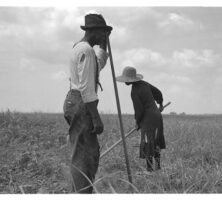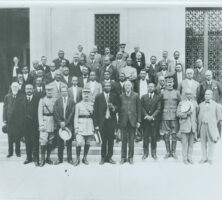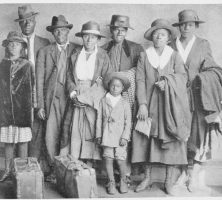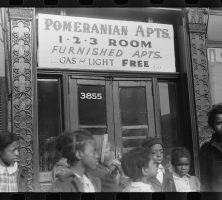The Great Migration was a mass movement of millions of African Americans that forever changed the state of Georgia and the United States. It developed in two general phases, with an initial wave that occurred between 1910 and 1930 and a second that unfolded between 1940 and 1970.
Over the course six decades, roughly 6 million Black southerners moved from the South to the North, Midwest, and West. Although millions of white southerners also moved during this period, scholars use the term “Great Migration” to refer only to the movements of African Americans—a choice indicative of their history as a racialized minority throughout slavery and Jim Crow. Driven by the availability of jobs outside the South, as well as the desire to escape racial violence within it, the migrants’ journeys were primarily from rural, agricultural areas like Georgia’s Black Belt to cities such as Detroit, New York, Chicago, and Los Angeles. As they moved, Black Americans transformed America into an urban nation and altered its social, political, and cultural fabric in ways that still resonate today.
The First Wave, 1910-1930
In 1910, almost 90 percent of the Black population in the U.S. lived in southern states, mostly in rural counties dominated by agriculture. Georgia’s Black population numbered roughly 1,176,000 in 1910, comprising 45 percent of the state’s total. Among former Confederate states, only Mississippi and South Carolina boasted a larger percentage of African Americans. Many Black Georgians worked as sharecroppers and tenant farmers on cotton plantations, with only a small percentage owning their own farms. The industrializing city of Atlanta, as well as the port city of Savannah, attracted increasing numbers of working-class African Americans in the early twentieth century.
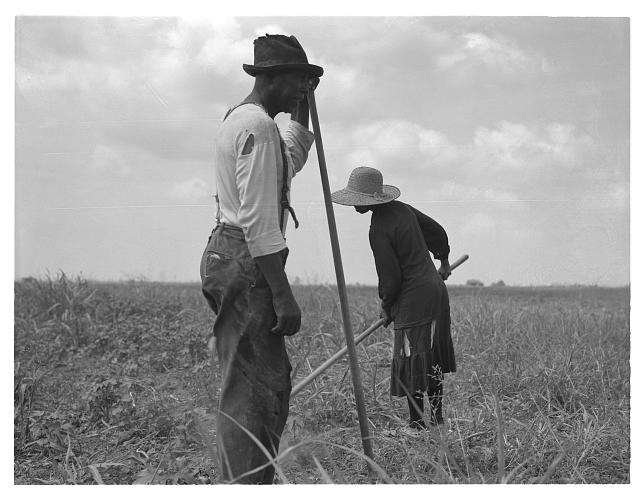
In both the cities and the countryside, Black Georgians were second-class citizens. The state’s Jim Crow laws, which increased in number and severity after 1900, segregated public places and made it practically impossible for African Americans to vote. Intimidation and extralegal violence awaited those who crossed these racial boundaries. Between 1880 and 1930, lynch mobs killed over 450 Georgians, most of them African Americans living in either the state’s cotton-growing Black Belt region or in south Georgia. Black Georgians also faced the threat of large-scale mob violence, as evidenced by the Atlanta Race Massacre of 1906 and the racial cleansing of Black residents from Forsyth County in 1912. While small numbers of African Americans did leave the South before 1910, millions remained trapped in a social system of white supremacy.
Events abroad and at home created the conditions for the Great Migration. In 1914 the beginning of World War I (1917-1918) curtailed immigration from southern and eastern Europe, spurring the need for employers to expand their labor pool. In the South, the twin phenomena of the boll weevil and devastating floods in 1915-1916 combined to decimate the cotton crop and unsettle farming conditions. Black sharecroppers were often the first to be let go by plantation owners. Cast off the land, many headed to the cities in search of work.
Once they arrived, Black migrants were met by labor agents of coal, steel, and railroad companies in the North, Midwest, and even Appalachia. An agent’s promises of a train ticket and higher wages away from the Jim Crow South were more than enough for many African Americans to take the chance on relocating. Black newspapers like the Chicago Defender, edited by Georgia native Robert S. Abbott, encouraged movement to “the Promised Land,” while word of opportunities elsewhere spread among family members and friends. The migration soon swelled into a mass movement, as almost half a million Black southerners left during World War I (1917-1918) alone. In Georgia 74,000 departed between 1910 and 1920, with many settling in Detroit, Pittsburgh, and New York.
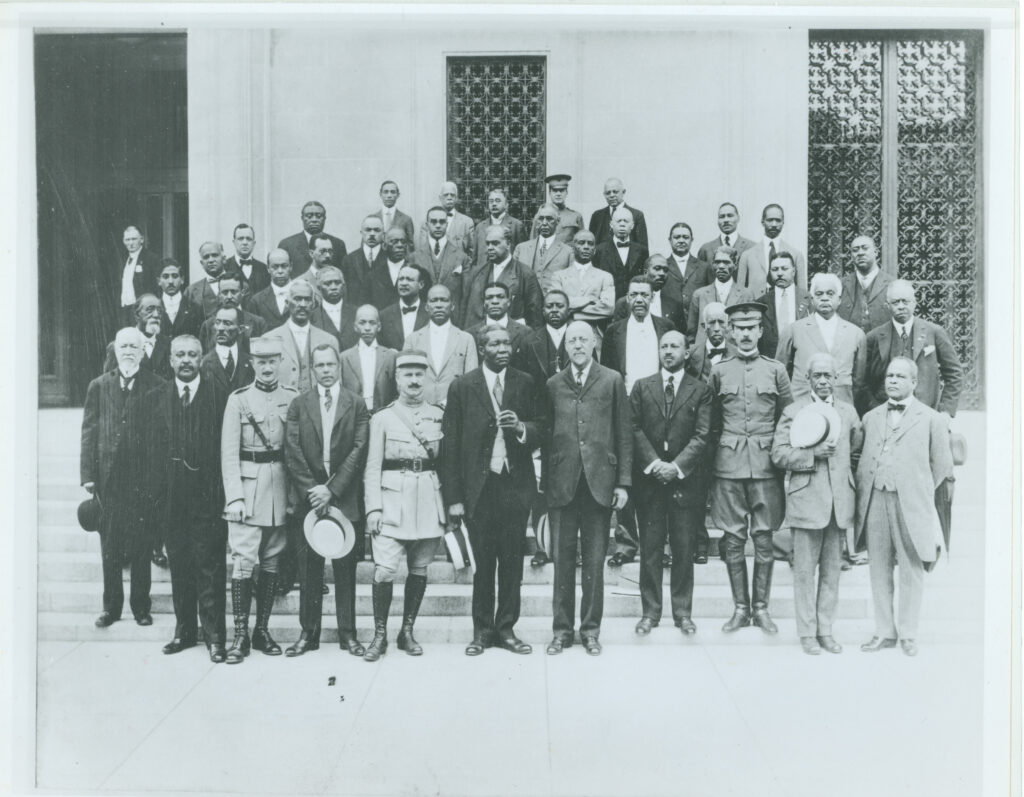
The first wave of migration, along with the experience of Black soldiers fighting overseas, engendered much hope for African Americans. The idea of the New Negro emerged, as did the Harlem Renaissance in the 1920s. Yet the rapid changes of the war years unsettled white Americans across the nation and led to a rise in suspicion, racism, and nativism, exemplified by the resurgence of the Ku Klux Klan in Stone Mountain, Georgia. Racial tensions among workers, exacerbated by employers and politicians but also embraced by some labor unions, erupted during a period that began with the East St. Louis Massacre of 1917.
Anti-Black mob violence became widespread during the Red Summer of 1919, which saw major riots in dozens of cities and towns, including deadly attacks by white mobs in Chicago, Illinois, Elaine, Arkansas, and Washington, D.C. Although the circumstances of each attack varied, white mobs tried invariably to roll back Black progress and reinforce racial hierarchies. Historians have struggled to categorize all the incidents, but in Georgia alone, notable mob violence occurred in Blakely (February 8); Millen (April 13); Warrenton (May 2); Sylvester (May 10); Milan (May 24); Putnam County (May 29); Dublin (July 6); Laurens County (August 29); and Macon (November 3). Perhaps because of this reactionary violence, migration increased throughout the 1920s with 810,000 more Black southerners departing the region, including 260,000 Georgians. Among them were the family of Jackie Robinson, who left behind a sharecropping life in Cairo, Georgia for Pasadena, California.

The Second Wave, 1940-1970
The lean economic times of the Great Depression dampened migration slightly, but mechanization and continued decline in cotton prices still prompted nearly 400,000 Black southerners to leave in the 1930s. The start of World War II reopened the floodgates in earnest. Again spurred by the fluctuations of a wartime economy, 1.45 million Black migrants left the South from 1940 to 1950, and 2 million more followed over the next twenty years. While the cities of the North and Midwest remained major destinations, the second wave of migration saw large numbers of African Americans move to the west coast. Los Angeles and Oakland, California attracted large numbers of ex-southerners, as did Portland, Oregon, and Seattle, Washington.
As with the first phase of migration, Black southerners found their new settings to be an improvement but also full of obstacles. White flight and discriminatory housing policies funneled African Americans into poorer neighborhoods and public housing complexes, which were more likely to experience drug-related violence and intensified police activity. This context proved rife for unrest, as the riots in several American cities during the 1960s made clear. The Chicago Freedom Movement, one of Martin Luther King Jr.’s final civil rights campaigns, highlighted the issues African Americans faced in Northern cities and led to the Fair Housing Act of 1968 following his assassination.
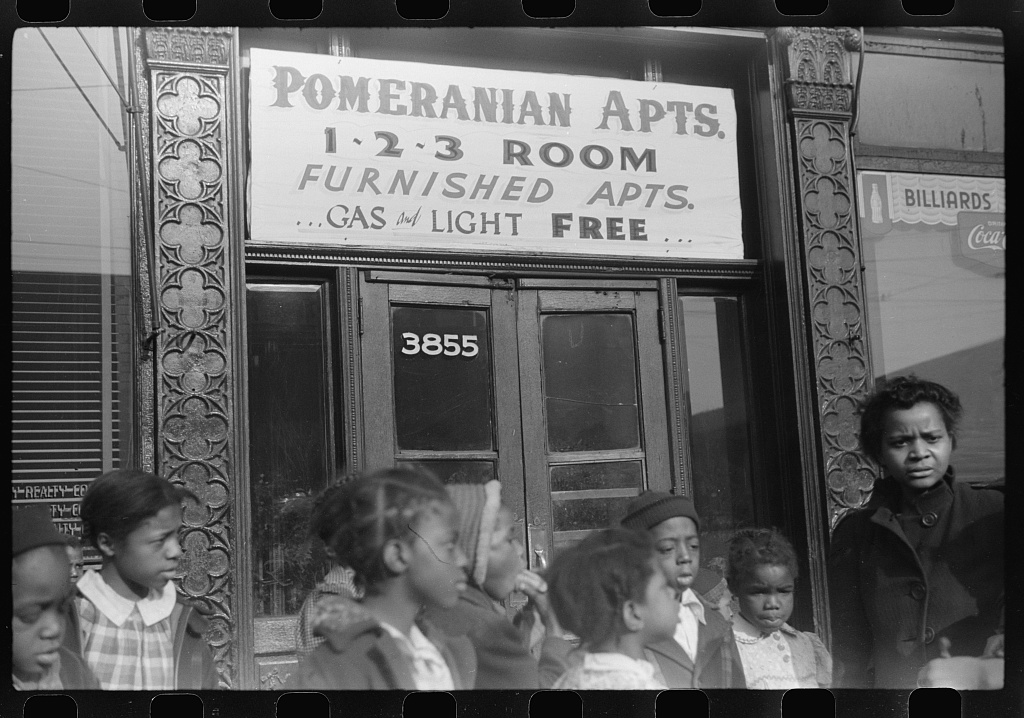
Throughout the 1970s, school desegregation protests in Boston and other northern cities confirmed that racism and inequality were not solely southern problems. Yet many African Americans continued to pursue the relative freedom and better-paying jobs available outside the Old Confederacy. As a result, only about 47 percent of African Americans lived in the South by 1970—a marked decline from 1910 when nine out of ten made their home in southern states.
Reverse Migration
The true end of the Great Migration story remains elusive. Recent decades have seen a reversal, as many African Americans have left the North, Midwest, and West for the South. The rise of the neoliberal globalized economy throughout the late twentieth century led to a loss in domestic industrial jobs and economic decline in many of the nation’s cities. The once-bustling manufacturing core in the Midwest, for example, became known as the Rust Belt and experienced a corresponding loss in population. Attracted by affordable housing, the end of Jim Crow, and job opportunities in the resurgent Sun Belt economy, the percentage of African Americans living in the South began to increase in the 1990s.
This migration is not an absolute about-face, however, as the return to the South is still characterized by a move to urban areas. The Black population of metro Atlanta, for example, more than doubled between 1990 and 2020, topping two million total in the 2020 census and making it second only to New York in the urban concentration of African Americans. Charlotte, North Carolina and Houston, Texas, as well as smaller cities in the South, have also seen increases in Black population. In Atlanta, the prevalence of an affluent Black middle and upper class has facilitated political change and earned the city the nicknames “The Black Mecca of the South” and “Black Hollywood.” Yet its poorer neighborhoods continue to experience the effects of income inequality, drug abuse, gun violence, and police brutality, as do many of the nation’s cities. Over a century since the start of the Great Migration, the idea of an American “Promised Land” remains a powerful, if sometimes illusory, aspiration.







